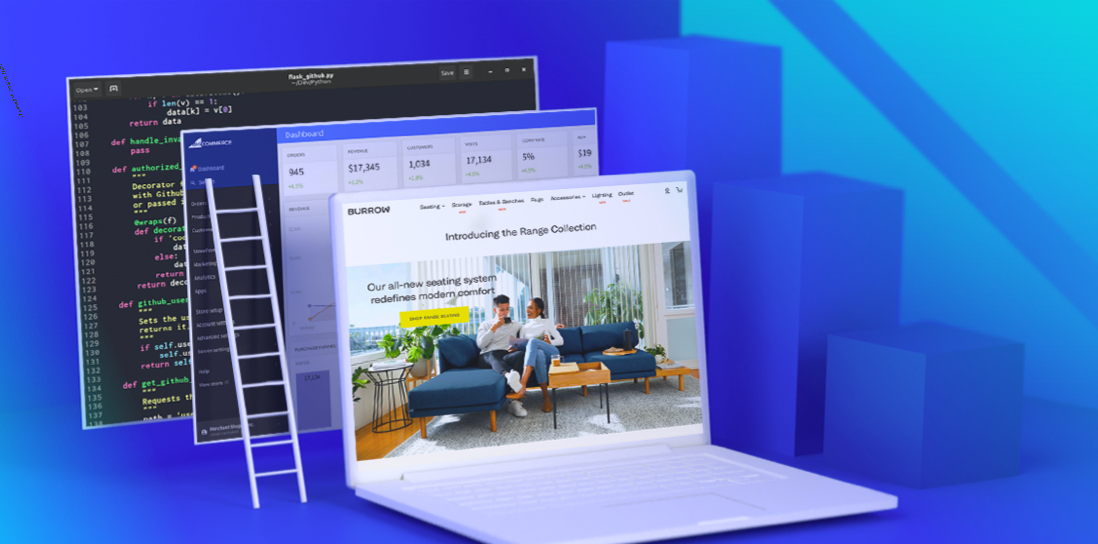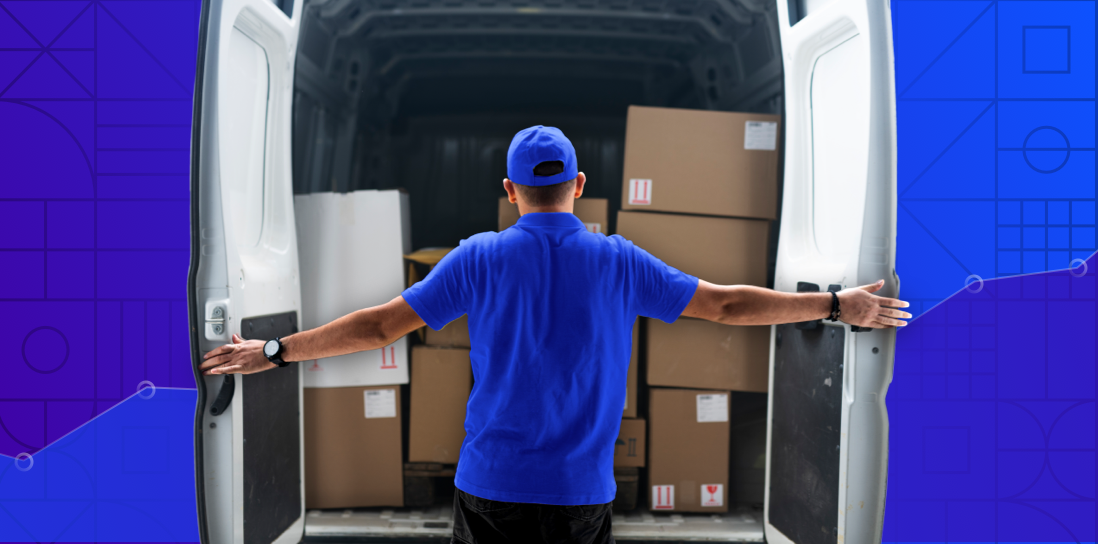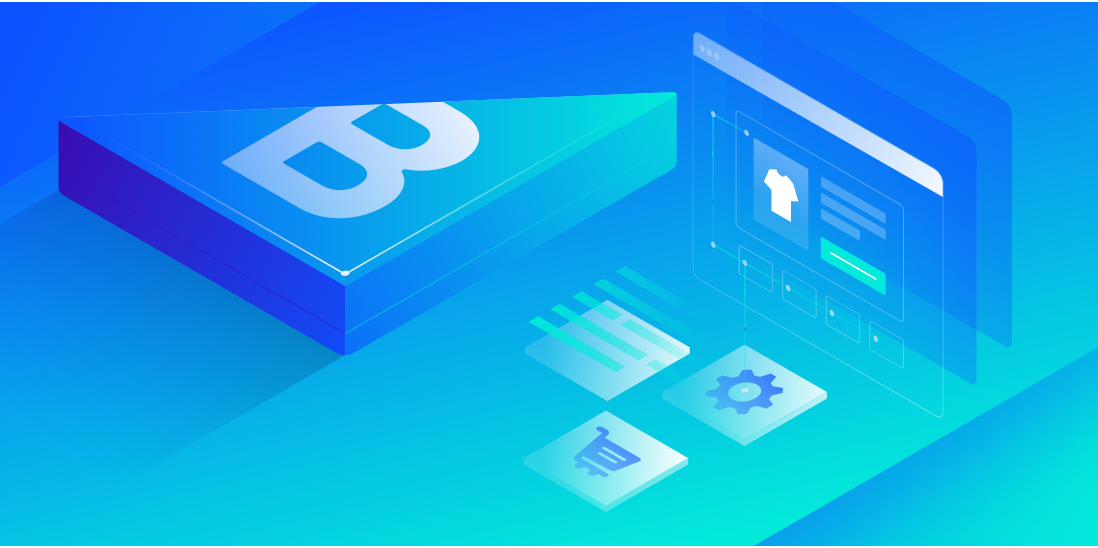- Enterprise
- Essentials
Lead with Experience: How Headless Can Provide the Experience-Driven Commerce Customers Crave

New Era of Ecommerce: Headless Commerce Whitepaper
TABLE OF CONTENTS
Ecommerce has had an interesting and profound transformation over the last two decades.
Does anyone remember what the Amazon website looked like in 1997?

Ecommerce was introduced about 40 years ago in its earliest form. Back then, ecommerce was new and only taken advantage of by early adopters. Most purchases were happening in stores where customers could expect certain things from the in-person experience, like personalized recommendations, direct assistance in finding the size, color, or products they needed, and the advantage of seeing what items looked like in person.
Then, of course, ecommerce exploded. In 2020, there are more than 7.1 million ecommerce sites. The worldwide COVID pandemic has only increased this trend as more and more people flood to ecommerce sites to make purchases. Ecommerce businesses should anticipate reaching $4.9 trillion sales in 2021, which is a 265% increase from 2014.
Over the years, what customers have come to expect from the ecommerce experience has also changed. The novelty of being able to buy something online and have it delivered to your house has long since worn off.
Today’s online shoppers expect many of the same things they used to only be able to get in-store.
They want personalized recommendations and experiences tailored to them. They want augmented reality that can approximate what those glasses will look like on their face or what that sofa will look like in their living room. They want robust search that can find them what they’re looking for easily and point out products they might not have even known they were looking for.
In short, experience is now a huge part of ecommerce shopping, and brands that want to remain competitive need to take note. In this deep dive, we’re looking at what experience-driven commerce is, why it’s important, and how your ecommerce brand can achieve it to win the hearts and minds of customers and keep them coming back.
What is Experience-Driven Commerce?
Experience-driven commerce focuses on providing an immersive and personalized experience for shoppers through an omnichannel approach. This means that shoppers can get the same, or a complementary, experience whether they shop in your brick-and-mortar store, on their desktop, or on mobile devices.
The experience continues through every part of the buyer’s on-site journey. Potential buyers are invited into a visually compelling story that changes based on their preferences and their previous interactions with your brand.
Today’s shoppers have an increasingly complex journey to checkout. They might initially see a product on social media, then research it on their phone, then later make the purchase on their computer. This is why a strategy that is seamlessly integrated across channels is an important part of experience-driven commerce.
Personalization is also at the forefront of the experience because customer expectations increasingly demand it. Think of the experiences you create as fundamentally tailored to the individual customer and whatever they are looking for at the moment they are looking for it. There are no one-size-fits-all campaigns in experience-driven commerce. The individual drives the experience.
Fundamental Trends Propelling Experience-Driven Commerce
Why the sudden rush to have engaging digital experiences when shopping?
Consider these stats:
- Customers who receive a personalized experience are 44% more likely to become repeat customers.
- 9 out of 10 consumers say they want an omnichannel experience that is seamless between channels.
- 75% of retailers consider optimizing their customer experience across channels to be “very important.”
It hasn’t happened all at once, but as more revenue in ecommerce has led to more competition, experience-driven commerce is a way to differentiate. Additionally, there are a few other changes that are pushing the market in this direction.
1. Millennials are demanding experiences.
Millennial shoppers are now one of the largest spending groups. They are projected to spend $1.4 trillion in 2020.
Obviously, appealing to this demographic is going to reap big rewards. And what millennials are looking for is a strong customer experience that includes:
- User-generated content
- Personalized recommendations
- Easy-to-use search functions
Essentially, they want to find the products they want quickly, be supported by content of real value, and be part of a social community. With these elements, their satisfaction goes up, and so does their lifetime value as customers.
2. Mobile devices are shaping human behaviors.
There are over 6 billion mobile devices in use around the world right now. To say that mobile technology has infiltrated and transformed every part of our lives is not an understatement — how we shop is no exception.
People use these devices to make quick purchases, research products (sometimes even from inside brick-and-mortar stores!), leave reviews, and more.
And the devices aren’t limited to phones. Some research posits that by 2030, each consumer will be using an average of 20 connected devices, including many that are mobile — from IoT to wearables and voice-activated speakers.
Having an experience that can translate, feel cohesive, and exchange data across all of these mediums will only grow in importance.
3. Blurred lines between physical and digital worlds.
Shoppers are increasingly combining the brick-and-mortar and ecommerce shopping experience. The growing popularity of curbside pickup or B0PIS offerings that allow customers to shop online but retrieve their merchandise from a physical location are one example.
So too are all the technologies that help bridge the gap between the physical and digital worlds and make the ecommerce customer experience feel more “real.” Augmented reality is one way brands are elevating their digital experience by making it possible for customers to see what products will look like — not just in a showroom or dressing room but in their everyday lives.
Additionally, we’re seeing digital creep more and more into the physical retail space. The same data that can provide a more personalized recommendation for customers shopping online can also be used in stores as digital signage changes based on proximity to customers with certain preferences.
As the lines between physical and digital stores are more and more blurred, brands must continue to focus on building up their overall experience so that it operates seamlessly regardless of where and how the customer is interacting with it.
Experience-Driven Commerce: A Multitude of Benefits
Investing in experience-led commerce can have many advantages for your business. It can help you stand out from the competition and cement your brand in the eyes of consumers.
1. Becoming a customer-centric organization is a key differentiator.
In a world where online shopping is dominated by Amazon and Google, and shoppers can easily visit huge marketplaces to compare prices, what incentives do they have to visit your site and become loyal to not only your products but your brand?
The answer is the experience. By understanding your audience and being able to deliver compelling, immersive, personalized experiences across channels, you can connect with them, give them a reason to buy from you, and to keep coming back.
2. An experience-driven approach creates touchpoints along the customer journey.
As touched on earlier, the journey from first discovery to checkout is an ever more long and winding road. Customers have increased the number of touchpoints they have with a brand prior to purchase as they are researching more on their own. Think of your customer experience as a series of bread crumbs you are creating along the customer journey that all connect to tell a cohesive story.
3. Enhancing the customer experience brings a higher return on investment.
Investing in experience-led commerce now has the potential to reap big rewards in the future. By knowing your audience and building relationships with them through personalized and omnichannel experiences, you are delivering what they want, wherever they want it. The result is experience-focused brands seeing big returns while legacy brands struggle to keep up.
Challenges With an Experience-Led Commerce Strategy
Rome wasn’t built in a day, and neither will your comparatively peaceful experience-led empire be. Creating a strong experience for your site should come with great planning and foresight.
1. Experience-led sites are resource-intensive.
To create an experience-led site and create it right, you will require a dedicated team including marketers, data analysts, and customer experience specialists working together cross-functionally. This team doesn’t necessarily have to be internal — you can work with an agency to develop your experience-led website. However, there will be some upfront costs involved.
2. An experience-led framework needs to be created.
Creating a new strategy for your site also requires a way to measure its effects. Determine clear KPIs and a framework for measuring your success. Without these steps, improvements are difficult to prove to the business. Not only does this make it hard to tell where you need to make tweaks, but over time it may dampen enthusiasm for the new approach.
Integrating Experience-Driven Commerce
If you’ve decided now is the time to really invest in your customer experience and in making your ecommerce store more experience-driven, there are a few things you need.
1. Technology.
Your technology has to be capable of creating the experience you want. This may mean adopting a new ecommerce platform or extending your existing tech stack. Regardless of your approach or specific tech of choice, it needs to be able to facilitate all of the following:
Provide a unified experience.
Your system needs to be unified and able to share information across channels. Only then can you get a 360-degree view of your customers, their data, and what they’re looking for — no matter where they’re accessing your brand.
Support a high volume of API calls.
An application program interface, or API, facilitates the sharing of data across your systems. Over 90% of the BigCommerce platform is exposed via APIs. Having a system that facilitates a high volume of API calls and doesn’t limit you is incredibly important to allowing you to freely innovate with your digital experience implementation.
Achieve long-term economies of scale.
You need your technology to support your growth and development long term. That includes maintaining a lower total cost of ownership so that you can continue to invest in the types of innovations that will keep your business growing.
Provide a seamless process to adding a custom frontend.
Choose a technology that empowers you to easily discover, test, and onboard headless platforms. If you already have a CMP, DXP, PWA or another existing frontend that you're happy with, this element might not matter as much. However, it could still be wise to choose an ecommerce engine that provides creative freedom if you do decide to consider a custom frontend in the future. For example, BigCommerce offers a Channels Toolkit that lets you onboard headless technologies right from the control panel. Learn more about how it works here. The Channels Toolkit can reduce your technical lift and developer hours to save both time and money.
2. Design.
Creating the perfect design and an experience that will resonate with your customers comes down to knowing your audience. Designing an outcomes-driven, human-centered commerce experience requires having enough data to empathize with your specific customers and align to their motivations across the entire customer journey. Investing in data architecture and establishing a governance framework are the foundations for driving relevant engagement and personalization.
3. Artificial intelligence.
Machine learning and artificial intelligence are beginning to impact ecommerce in a big way. They can help you learn about your customers and supply them with the personalized experiences they are craving. AI has the power to help companies connect customer data with real-time insights to enhance the shopping experience. AI can also help automate tasks like customer support through chatbots to provide customers with help 24/7.
Headless Solutions for Experience-Led Commerce
There is not just one way to get all of the above and create a strong experience-driven site. If you have a lot of money to spend on development, you can create something using an open-source ecommerce site.
However, open source is not the only option — which is good because many businesses don’t have the developer resources to sink into building an experience-led site on an open-source platform. Using a headless solution on an open SaaS platform can achieve the same flexibility and customization, often with a lower total cost of ownership.
Headless commerce means decoupling the frontend presentation layer which delivers the customer-facing experience and the backend ecommerce engine. The frontend and backend can then communicate through API calls.
Headless can facilitate all of the following:
1. A personalized customer experience.
By not limiting you to pre-designed templates, headless allows you to use whatever frontend will best support your business goals and your customers. That means you can pick a digital experience platform like Bloomreach or Adobe Experience Manager that specializes in creating the types of personalized experiences your customers are craving and applying them across all shopping channels.
You can also explore content management systems, progressive web apps, IoT devices, and any other number of frontend solutions.
2. Business agility.
Being able to move quickly and respond to market changes is the name of the game in the competitive world of ecommerce. Headless can facilitate agility because you can make quick, innovative changes on the frontend without disrupting the backend. Using a SaaS platform on the backend means you also don't have to worry about updates or applying security patches. Coupled together, SaaS and headless commerce (composable commerce) can help brands get to market quickly.
3. Omnichannel strategy.
As emphasized throughout, a big part of experience-driven commerce is making it available across all channels that your customers shop on. Headless makes it easier to add new touchpoints on the frontend while still connecting them all on one backend system. These seamless connections are possible because the different systems are able to communicate with each other through APIs.
4. Scaling your business.
As your business grows, you will experience more traffic to your site. You will also likely have particular rush periods with higher traffic. Having a backend system that is decoupled from the frontend presentation layer makes it easier to handle a traffic surge on the frontend without disrupting the backend ecommerce engine. Additionally, if using a SaaS platform on the backend you get the performance, security, and reliability benefits that come with it. That way you can focus on revenue-driving activities on the frontend.
Is Headless Right for Your Experience-led Commerce?
This is a question that only you can answer. Headless is one great solution for businesses looking to invest in creating a more experience-driven website. If you already have a digital experience platform or custom-built frontend that you’re using, a headless build can enable you to keep that solution while upgrading your backend ecommerce functionality.
Headless will likely require a greater amount of development and design work because you are operating two separate systems. However, regardless of how you achieve it, if you plan to invest in experience-led commerce, you will be planning for some of these expenses.
You are ultimately the best judge of your business and your customers. Do your research and explore all the options to determine if going the experience-led route will best benefit your growth. Then determine if headless is the best way to achieve it.
Conclusion
We’ve come a long way from when Amazon.com was just a static list of products on a screen, not unlike a sales catalogue.
Today’s customers want more. They want convenience and personalized service. And they want it everywhere they are. Transforming your site into an experience-led one has the potential to differentiate you from competitors and grow your business now and in the future.
Experience-Led Commerce Frequently Asked Questions
Does experience-led commerce make sense for all ecommerce stores?
Not necessarily. While experience-led commerce can have a number of advantages for stores seeking to convert more customers in a competitive field, that doesn't mean it's the right fit for your customers. You know your audience best. If your customers don't shop on mobile, don't care about personalization, and prefer a very straight-forward transaction, it might not make sense to expend resources to make your site more experience-driven.
Can experience-led commerce be used for B2B?
Yes, but it depends on your customers. In 2020, close to half of all B2B buyers are Millennials, and Millennials have been found to have higher expectations for their shopping experience. Having a personalized experience or making your site optimized for mobile can absolutely be a benefit here.
What are the benefits of using headless for experience-led commerce?
Headless can make it easier to achieve experience-led commerce because you can use technologies on your frontend presentation layer that are designed to create innovative digital experiences. For example, you could leverage a DXP like Bloomreach or a PWA like Deity and connect it to an ecommerce engine on the backend for your shopping cart functionality.
What tools do I need to create experience-driven commerce?
The tools you need will depend on the type of experience you want to create. If you want an more omnichannel experience that will provide customers shopping on mobile with a native app like experience, then you may want to consider using a progressive web app or PWA as the frontend of your site. Or if you want to create a highly personalized digital experience, you might consider a digital experience platform of DXP like Bloomreach or Adobe Experience Manager. The first thing to figure out is what you want to do, then research what specific tools can help you get there.
Do I need a developer to build out an experience-led online store?
Yes, you will likely need developer resources to design your experience-led store. If you don't have an in-house team that can work on it, you can always use a developer agency for help.




